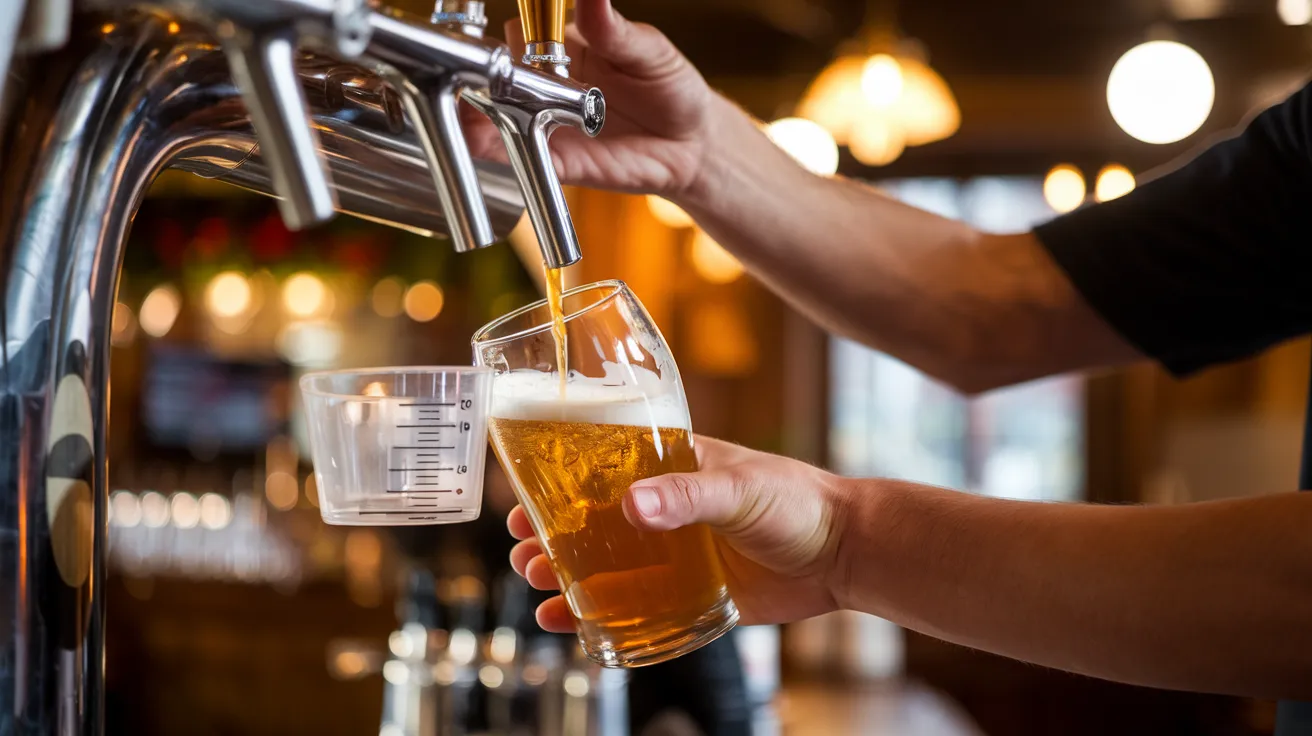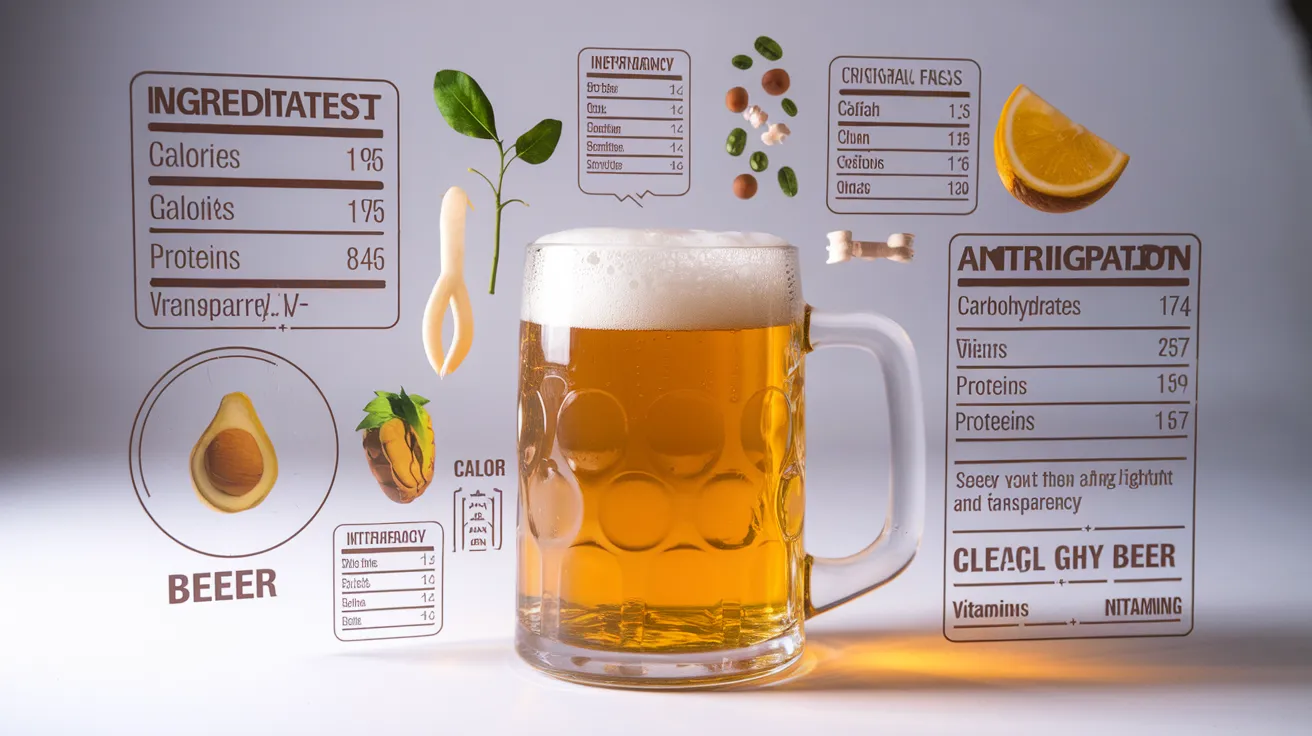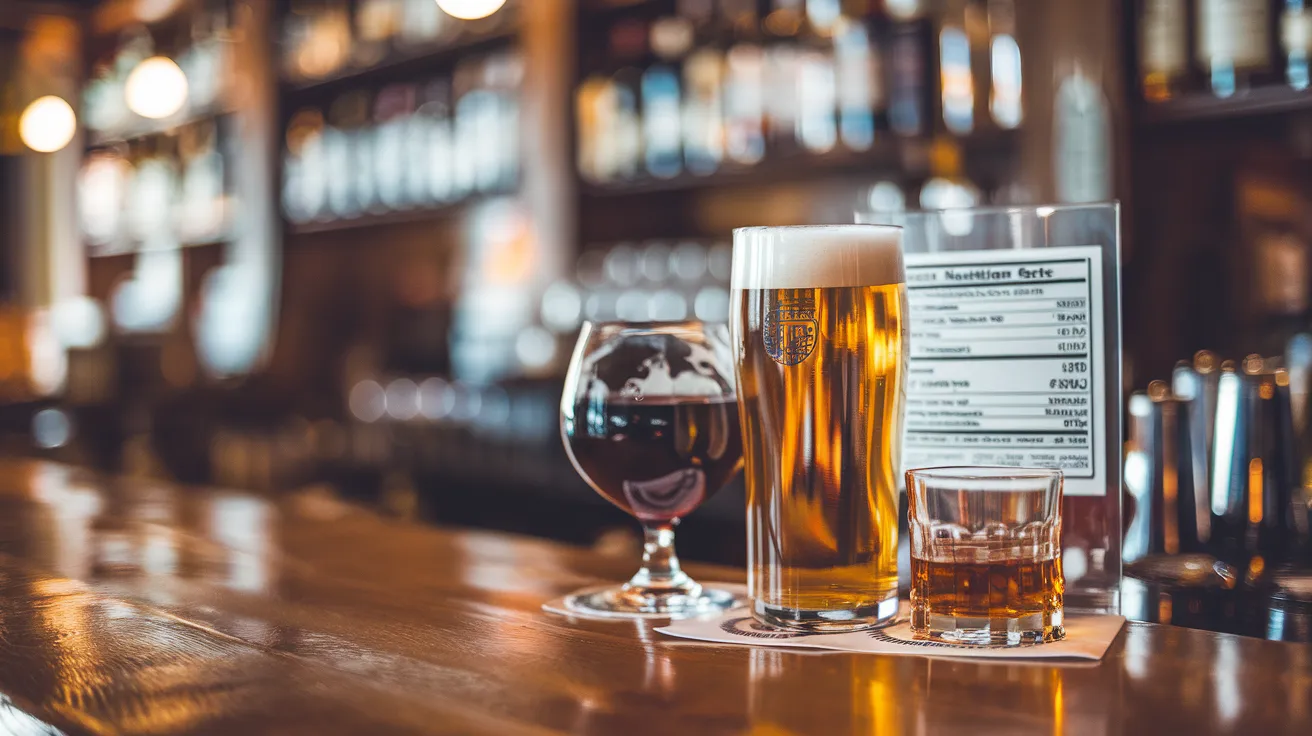Have you ever wondered if that cold, refreshing beer in your hand could actually be good for you? It’s a question that’s been brewing in the minds of beer enthusiasts and health-conscious individuals alike. While excessive alcohol consumption is undoubtedly harmful, the science behind moderate beer drinking tells a fascinating story that might surprise you.
⚠️ Alcohol Content Disclaimer: GetUrDrinkOn.com features content related to alcoholic beverages and mixology. All content is intended for informational and entertainment purposes only. We do not sell alcohol or promote underage or irresponsible drinking. This site is intended for adults aged—21 and over in the United States, and 18 and over in most other countries. Please drink responsibly. If you or someone you know is struggling with alcohol use, please seek professional help.

From its rich nutritional composition to potential health benefits, beer has been the subject of numerous scientific studies. But before you rush to stock up your fridge, it’s crucial to understand the delicate balance between enjoyment and responsibility. In this deep dive into the world of beer and health, we’ll explore the latest research, debunk common myths, and provide you with the knowledge to make informed decisions about your drinking habits.
👉 Upgrade your home whiskey setup with the sleek and functional 🛒 Zarler Bar Cart Bar Table with LED lighting, power outlet, and 4-tier liquor storage—perfect for any modern home bar.
Join us as we uncover the truth about beer’s impact on your body, compare it to other alcoholic beverages, and learn valuable tips for responsible consumption. Whether you’re a casual drinker or a craft beer connoisseur, this journey through the science of moderate beer consumption will leave you with a newfound appreciation for this age-old beverage. Let’s raise a glass to knowledge and dive into the foamy depths of beer’s relationship with your health!
Understanding Moderate Beer Consumption

Defining “moderate” drinking
Moderate drinking is a concept that varies across cultures and health organizations. Generally, it refers to consuming alcohol in amounts that are unlikely to cause significant health risks or impairment. For beer consumption, moderation typically means:
- For men: Up to 2 standard drinks per day
- For women: Up to 1 standard drink per day
It’s important to note that a “standard drink” of beer is usually defined as:
| Beer Type | Volume | Alcohol Content |
|---|---|---|
| Regular | 12 oz | 5% ABV |
| Light | 12 oz | 4.2% ABV |
| Craft | 8-9 oz | 7% ABV |
Recommended daily limits
Health organizations worldwide provide guidelines for alcohol consumption. Here are some examples:
- U.S. Dietary Guidelines: Up to 1 drink per day for women, up to 2 drinks per day for men
- UK Chief Medical Officers’ Guidelines: No more than 14 units of alcohol per week for both men and women
It’s crucial to remember that these are upper limits, not targets. Some individuals may need to consume less or abstain entirely.
Factors affecting individual tolerance
Several factors can influence how alcohol affects an individual:
- Body weight and composition
- Gender
- Age
- Genetics
- Liver function
- Medication use
- Food consumption
- Hydration levels
These factors can impact how quickly alcohol is metabolized and its effects on the body. It’s essential to understand your personal tolerance and adjust consumption accordingly.
Now that we’ve established what constitutes moderate beer consumption, let’s explore the nutritional composition of beer to better understand its potential effects on health.
Nutritional Composition of Beer

Calories and carbohydrates
Beer is often associated with the dreaded “beer belly,” but understanding its nutritional composition can help demystify its impact on our diet. On average, a 12-ounce serving of regular beer contains:
| Nutrient | Amount |
|---|---|
| Calories | 150 |
| Carbs | 13g |
| Protein | 1.6g |
| Fat | 0g |
Light beers typically have fewer calories and carbs, ranging from 95-120 calories and 3-6g of carbs per serving. It’s worth noting that higher alcohol content beers, such as IPAs or stouts, may have more calories.
Vitamins and minerals
Despite its reputation, beer does contain some beneficial nutrients:
- B vitamins (B1, B2, B3, B6, and B12)
- Minerals like phosphorus, silicon, and magnesium
However, the amounts are relatively small, and beer should not be considered a primary source of these nutrients.
Antioxidants in beer
Beer contains several antioxidants, primarily from its hop and malt ingredients:
- Flavonoids
- Phenolic acids
- Melanoidins
These compounds may contribute to beer’s potential health benefits when consumed in moderation.
Gluten content
For those with gluten sensitivities, it’s important to note that most beers contain gluten from barley or wheat. However, gluten-free options are available:
- Beers made from naturally gluten-free grains (sorghum, rice, millet)
- Gluten-reduced beers (enzymatically treated to break down gluten)
- Truly gluten-free beers (brewed in dedicated gluten-free facilities)
Now that we’ve explored beer’s nutritional profile, let’s delve into the potential health benefits of moderate beer consumption.
Potential Health Benefits of Moderate Beer Drinking

Cardiovascular health improvements
Moderate beer consumption has been linked to several cardiovascular benefits. Studies have shown that it can:
- Increase HDL (good) cholesterol levels
- Reduce the risk of heart disease
- Lower blood pressure
| Cardiovascular Benefit | Effect of Moderate Beer Consumption |
|---|---|
| HDL Cholesterol | Increases levels |
| Heart Disease Risk | Reduces risk |
| Blood Pressure | Lowers |
Reduced risk of type 2 diabetes
Research suggests that moderate beer drinkers may have a lower risk of developing type 2 diabetes compared to non-drinkers. This effect is attributed to:
- Improved insulin sensitivity
- Better glucose metabolism
Bone density enhancement
Beer contains silicon, a mineral that plays a crucial role in bone formation. Moderate consumption may contribute to:
- Increased bone mineral density
- Reduced risk of osteoporosis
Cognitive function preservation
Some studies indicate that moderate beer drinking might have neuroprotective effects, potentially:
- Slowing cognitive decline
- Reducing the risk of dementia and Alzheimer’s disease
Kidney stone prevention
Beer’s diuretic properties and mineral content may help prevent kidney stones by:
- Increasing urine output
- Reducing the concentration of stone-forming minerals
It’s important to note that these potential benefits are associated with moderate consumption. Excessive drinking can negate these effects and lead to serious health issues. As we explore the science behind beer’s effects on the body, we’ll gain a deeper understanding of how it interacts with our systems.
Possible Risks and Side Effects

A. Increased calorie intake and weight gain
While moderate beer consumption may offer some health benefits, it’s crucial to be aware of potential risks, starting with increased calorie intake and weight gain. Beer is often referred to as “liquid bread” due to its caloric content, which can quickly add up:
| Beer Type | Average Calories per 12 oz (355 ml) |
|---|---|
| Light Beer | 95-100 |
| Regular Beer | 140-160 |
| Craft Beer | 170-350 |
Regular beer consumption can lead to:
- Increased daily caloric intake
- Potential weight gain over time
- Higher risk of obesity-related health issues
To mitigate these risks, consider:
- Opting for light beers
- Alternating beer with water
- Being mindful of portion sizes
B. Liver health concerns
Excessive beer consumption can significantly impact liver health. The liver is responsible for metabolizing alcohol, and prolonged exposure can lead to:
- Fatty liver disease
- Alcoholic hepatitis
- Cirrhosis
C. Interactions with medications
Beer can interact with various medications, potentially altering their effectiveness or causing adverse reactions. Some common interactions include:
- Increased risk of bleeding with blood thinners
- Enhanced sedative effects with certain antidepressants
- Reduced effectiveness of antibiotics
Always consult with a healthcare professional about potential interactions between alcohol and your medications.
D. Addiction and dependency risks
While moderate consumption may be safe for some, it’s important to recognize the potential for addiction and dependency. Factors that may increase risk include:
- Family history of alcoholism
- Mental health conditions
- Stress and environmental factors
Now that we’ve explored the potential risks, let’s examine how beer’s effects on the body are supported by scientific research.
The Science Behind Beer’s Effects on the Body

Alcohol metabolism process
The body’s process of metabolizing alcohol in beer is complex and involves several organs. Here’s a breakdown of the key steps:
- Absorption
- Distribution
- Oxidation
- Elimination
| Stage | Primary Organ | Process |
|---|---|---|
| Absorption | Stomach & Small Intestine | Alcohol enters bloodstream |
| Distribution | Bloodstream | Alcohol circulates throughout body |
| Oxidation | Liver | Alcohol is broken down |
| Elimination | Kidneys, Lungs, Skin | Remaining alcohol is expelled |
The liver plays a crucial role, processing about 90% of consumed alcohol. It uses enzymes like alcohol dehydrogenase (ADH) to break down ethanol into acetaldehyde, which is then further metabolized into acetate.
Impact on brain chemistry
Beer affects neurotransmitters in the brain, primarily:
- GABA: Increased activity, leading to relaxation
- Dopamine: Enhanced release, creating feelings of pleasure
- Glutamate: Decreased activity, slowing cognitive function
These changes result in the typical effects of alcohol consumption, such as reduced inhibitions and impaired judgment.
Hormonal influences
Moderate beer consumption can influence various hormones:
- Cortisol: May increase, affecting stress responses
- Testosterone: Can decrease in men with excessive consumption
- Estrogen: Potentially elevated in women, influencing various bodily functions
Effects on sleep patterns
While beer might help some fall asleep faster, it often disrupts sleep quality:
- Reduces REM sleep
- Increases nighttime awakenings
- May exacerbate sleep apnea
Understanding these physiological effects helps explain both the immediate and long-term impacts of beer on health. Next, we’ll compare beer to other alcoholic beverages to provide a comprehensive perspective on its effects.
Comparing Beer to Other Alcoholic Beverages

Wine vs. beer health benefits
When comparing beer and wine, both offer potential health benefits when consumed in moderation. Let’s examine their key differences:
| Characteristic | Beer | Wine |
|---|---|---|
| Calories | 150-200 per 12 oz | 120-150 per 5 oz |
| Antioxidants | Moderate levels | High levels |
| Fiber content | Higher | Lower |
| B vitamins | Higher | Lower |
While wine is often praised for its antioxidant content, particularly resveratrol in red wine, beer contains its own unique set of beneficial compounds. Beer’s higher fiber and B vitamin content may contribute to heart health and improved digestion.
Spirits and their health implications
Spirits, such as vodka, whiskey, and gin, differ significantly from beer in terms of health implications:
- Higher alcohol content (typically 40% ABV)
- Lower nutrient content
- Fewer antioxidants compared to beer and wine
When consumed in moderation, spirits may offer some cardiovascular benefits. However, their higher alcohol concentration increases the risk of overconsumption and related health issues.
Impact of different brewing methods
Brewing methods can significantly influence beer’s nutritional profile and potential health effects:
- Traditional brewing: Preserves more nutrients and antioxidants
- Filtered beers: May lose some beneficial compounds
- Craft brewing: Often uses more diverse ingredients, potentially increasing nutritional value
Unfiltered or bottle-conditioned beers tend to retain more of their original nutrients and yeasts, which may offer additional health benefits. However, it’s important to note that regardless of brewing method, moderation remains key to reaping any potential health benefits from beer consumption.
Tips for Responsible Beer Consumption

Pacing strategies
Adopting effective pacing strategies is crucial for responsible beer consumption. Here are some key approaches:
- Sip slowly: Enjoy the flavor and aroma of your beer by taking small sips.
- Set a time limit: Decide in advance how long you’ll spend drinking.
- Use the one-per-hour rule: Limit yourself to one standard drink per hour.
- Alternate with water: Drink a glass of water between beers to slow consumption.
Food pairing for moderation
Pairing beer with food not only enhances the dining experience but also promotes moderation:
| Food Type | Benefits for Moderation |
|---|---|
| Protein-rich | Slows alcohol absorption |
| High-fiber | Keeps you feeling full |
| Complex carbs | Provides sustained energy |
Hydration importance
Staying hydrated while consuming beer is essential for several reasons:
- Reduces dehydration effects of alcohol
- Helps maintain electrolyte balance
- Potentially lessens hangover symptoms
- Aids in pacing beer consumption
Alternatives to alcoholic beer
For times when you want to enjoy the taste of beer without the alcohol, consider these options:
- Non-alcoholic beers: Offer similar flavor profiles with minimal alcohol content
- Hop-infused sparkling water: Provides a beer-like taste without calories or alcohol
- Kombucha: Fermented tea with a slightly bitter taste reminiscent of beer
- Craft sodas: Often have complex flavors that can satisfy beer cravings
The Final Pour
By implementing these responsible drinking strategies, you can enjoy beer in moderation while minimizing potential health risks. Remember, the key to reaping any potential benefits of beer consumption lies in moderation and mindful drinking habits.

The relationship between beer and health is complex, with both potential benefits and risks associated with moderate consumption. While beer contains essential nutrients and antioxidants that may contribute to heart health and bone density, it’s crucial to remember that excessive drinking can lead to serious health issues. The key lies in moderation and understanding how beer affects your body.
As with any alcoholic beverage, responsible consumption is paramount. By following guidelines for moderate drinking, staying hydrated, and being mindful of your overall health, you can potentially enjoy the benefits of beer while minimizing risks. Remember, individual responses to alcohol vary, so it’s always best to consult with your healthcare provider about how beer consumption may fit into your personal health plan.
👉 Elevate your hydration game with the 🛒 Ninja Thirsti Drink System – a powerful soda maker that lets you personalize your sparkling & still drinks with adjustable size, flavor, and carbonation! 🥤✨ Includes a 60L CO2 cylinder & flavored water drops for ultimate refreshment.
📌 Also Read: History of Jamaican Rum Production
Join the Conversation!
Drop your thoughts in the comments below and let’s chat about all things beverage!
Frequently Asked Questions (FAQ)
Yes, studies suggest that moderate beer consumption may offer cardiovascular, bone, and cognitive health benefits. However, moderation is key.
Up to 2 standard drinks per day for men and 1 for women, based on guidelines by major health organizations.
Beer contains B vitamins, minerals like magnesium and silicon, and antioxidants such as flavonoids and phenolic acids.
Some research links moderate beer drinking with improved insulin sensitivity and reduced risk of cognitive decline, but findings are not conclusive.
Risks include weight gain, liver issues, potential medication interactions, and increased dependency when consumed excessively.
Yes, options include non-alcoholic beers, hop-infused sparkling water, kombucha, and craft sodas for similar taste experiences.



